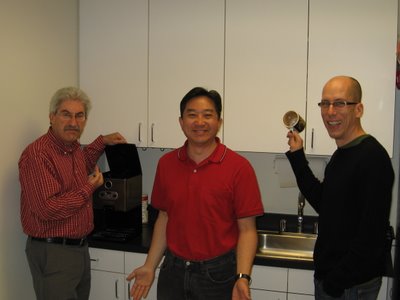Wanted: People with Taste
Paul Graham wrote a good book a couple years ago, Hackers and Painters: Big Ideas from the Computer Age. I wrote a review of it shortly after it came out.
One of my favorite chapters in that book is titled "Taste for Makers." (Hackers and Painters is a compendium of some of Paul's web essays along with some new material. You can read Taste for Makers on his web site.) Paul begins his essay with:
I was talking recently to a friend who teaches at MIT. His field is hot now and every year he is inundated by applications from would-be graduate students. "A lot of them seem smart," he said. "What I can't tell is whether they have any kind of taste."
Paul goes on to say:
Taste. You don't hear that word much now. And yet we still need the underlying concept, whatever we call it. What my friend meant was that he wanted students who were not just good technicians, but who could use their technical knowledge to design beautiful things.
Indeed. Taste is one of those elusive qualities that never shows up on a resume. Sure, everybody lists the jobs they have held, uses action sentences like "grew revenue from $0 to $1B in six months," and ends with a list of university degrees and that ever-important "References available upon request" (would anybody not provide references if they were requested?). What's always missing is some indication of whether that person has any taste.
I'm not even sure I could provide a good definition of taste, but I think Paul has something when he associates it with the ability to design beautiful things. I think I'd relax that definition a bit and say that taste is the ability to recognize beautiful things. You can't design what you can't even recognize and there are actually many people who can do the design of beautiful things that somebody else has specified.
In the world of products, taste is what separates the truly-special from the increasingly-ordinary. Taste is what makes an Apple iPod "better" than the hundreds of other MP3 players on the market, even the ones that arrived on the scene before it. Taste is what makes a Tivo DVR better than the other DVR alternatives. In these and countless other products, taste is what turns nearly-identical physical components into very-distinctive user experiences.
And unfortunately, taste is both in short supply and difficult to find when reading resumes.
I wrote this blog entry because Vyatta thinks that taste is important. It's something to be sought after and valued when it's found. If you think you have it and want to work with people who value it, send us your resume and include a cover letter telling us why you think so.
We need software engineers, testers familiar with network products, and product managers.





